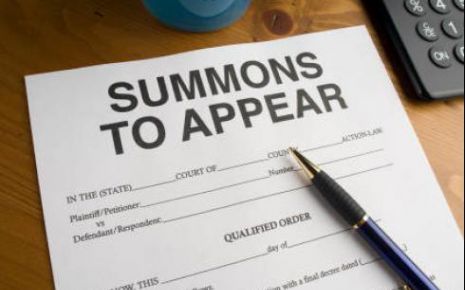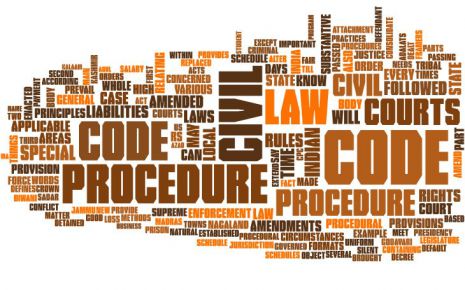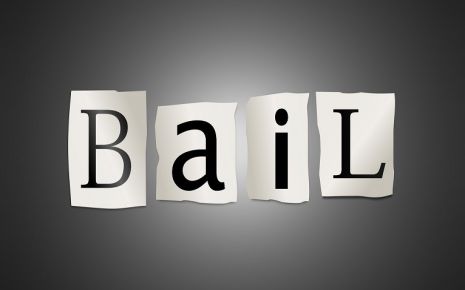Analysis of Doctrine of Fruit Of Poisonous Tree In Various Common Law Countries
The fruit of the poisonous tree is used in the context of admissibility of
evidence collected by the investigative authority through violating the 'Due
Process Of Law'. Firstly, this doctrine evolved in the American Jurisprudence in
the case of Nardone v. United States[1]. It extends the 'Exclusionary Rule[2]'.
This rule makes the evidence inadmissible in a court of law if the police have
illegally obtained it.
The fruit is considered as the evidence obtained by the investigative authority and the poisonous tree is the illegal way through which the evidence has been obtained. Before admitting the evidence, the Hon'ble Court checks the way whether it is legally obtained or illegally obtained, if it has been legally obtained then it would be admissible in the court. The Fourth Amendment of the US Constitution provides a safeguard to its people from unreasonable search and seizure.
The American Jurisprudence focuses on the conduct of the Investigative Authority and strictly follows the exclusionary rule to protect the basic rights of the citizen. The Fourth US Constitutional Amendment provides safeguards to its citizens from unwarranted search and seizure.
"Under section 78 of the 'Police and Criminal Evidence Act 1984', the court now has the power to exclude evidence on which the prosecution proposes to rely if, having regard to all the circumstances, the court considers the admission of the evidence would have such an adverse effect on the fairness of the proceedings that the court ought not to admit.[8]"
Conclusion
The fruit of poisonous trees is implicitly implemented in various common-law countries. The aim behind this doctrine is to safeguard the people's rights covered in the Constitution and curb the arbitrariness of the investigating authority.
End-Notes:
The fruit is considered as the evidence obtained by the investigative authority and the poisonous tree is the illegal way through which the evidence has been obtained. Before admitting the evidence, the Hon'ble Court checks the way whether it is legally obtained or illegally obtained, if it has been legally obtained then it would be admissible in the court. The Fourth Amendment of the US Constitution provides a safeguard to its people from unreasonable search and seizure.
Admissibility-Related Laws In Other Commonwealth Countries
United States Of America (USA)
In the USA, there are strict provisions not to admit illegally obtained evidence such as the Exclusionary rule, the fruit of a poisonous tree, and The Fourth USA Constitutional Amendment. There are a few exceptions also provided to these laws and they are the following:-- Good Faith Exception:
This exception allows the Hon'ble court to admit the evidence if the investigative authority has rightly proved their part that during the collection of the evidence they acted in good faith then only the evidence would be admissible.
Example: If the investigative authority has relied upon the search warrant and conducted search and seizures. In the later part, if it is found that the search warrant has some defect then the evidence would be admissible and the fruit of the poisonous tree would not be applicable because the authority had relied upon the search warrant and they had no knowledge of defect in the search warrant. It means the authority acted in good faith[3] and they followed the Due Process Of Law.
- Inevitable Discovery Doctrine:
This doctrine first evolved in the case of Nix v. Williams[4] in this, the U.S. Supreme Court stated that if the evidence collected by the investigative authority is the result of 'inevitably' discovery then it would be admissible in the court.
- Independent Source Doctrine:
This doctrine is notably discussed in the case Murray v. United States[5]. If the investigative authority has legally obtained the evidence but the whereabouts of the evidence were disclosed to the investigative authority through illegal means then the court may apply this doctrine and admit that evidence.
- Attenuation Doctrine:
This doctrine provides that if the initial illegal conduct of the investigative authority, such as an illegal search, seizure, and arrest but the connection between the unlawful police conduct and the discovery of the evidence is sufficiently attenuated then the court on its discretion may admit the evidence. This doctrine is well discussed in the case Brown v. Illinois[6].
The American Jurisprudence focuses on the conduct of the Investigative Authority and strictly follows the exclusionary rule to protect the basic rights of the citizen. The Fourth US Constitutional Amendment provides safeguards to its citizens from unwarranted search and seizure.
United Kingdom (U.K.)
In the United Kingdom, the exclusionary rule is not followed strictly compared to the United States. Instead, the admissibility of the evidence in the U.K. is governed by the common law principles of fairness, justice, and the right to a fair trial. The English Jurisprudence focuses on fair trial and if the admission of evidence disreputes the administration of justice then the court may consider these factors and reject the evidence[7]."Under section 78 of the 'Police and Criminal Evidence Act 1984', the court now has the power to exclude evidence on which the prosecution proposes to rely if, having regard to all the circumstances, the court considers the admission of the evidence would have such an adverse effect on the fairness of the proceedings that the court ought not to admit.[8]"
India
In India, there is no certain or fixed provision, coded anywhere on the admissibility of illegally obtained evidence. The prior era to the Puttaswamy case provides both aspects of this in evolving Indian Jurisprudence. The Indian Judicial system is much more focused on the 'relevancy' aspect of the evidence. If the evidence obtained by the investigating authority is relevant for the case to prove the guilt of the accused then it is admissible in the court[9].The provisions that conflict with this relevancy aspect of the evidence being illegally obtained are the following:
- Article 21 of the Constitution of India.
It provides the right to privacy[10] to the citizens of India. The approach of 'ends justify the means' in Malkani's case somewhere hit the privacy right of the citizen which is safeguarded under this article. However, this right falls under the category of fundamental rights which are not absolute at the time of emergency[11].
- Sec5(2) of the Telegraph Act, 1885, and Rule 419-A of the Telegraph
Rules, 1951.
Section 5 (2) of the Telegraph Act, 1885 r/w 419-A of the Telegraph Rules, 1951 empowers the government of central and state or any officer especially who is authorized to intercept the message from any class of person on the occurrence of any public emergency.
Conclusion
The fruit of poisonous trees is implicitly implemented in various common-law countries. The aim behind this doctrine is to safeguard the people's rights covered in the Constitution and curb the arbitrariness of the investigating authority.
End-Notes:
- Nardone v. United States, 308 U.S. 338.
- Weeks v. United States, 232 U.S. 383 (1914).
- United States v. Leon, 468 U.S. 897 (1984).
- 467, U.S. 431 (1984).
- 487 U.S. 533 (1988).
- 422 U.S. 590 (1975).
- R v. Sang
- Para 11, Regina versus Looseley [2001] UKHL 53
- R.M. Malkani v. State Of Maharashtra, (1973) 1 SCC 471.
- Justice K.S. Puttaswamy and Anr. Vs. Union Of India (2019) 1 SCC 1.
- Para 28, A.K. Gopalan v. State of Madras 1950 AIR 27.
Law Article in India
Legal Question & Answers
Lawyers in India - Search By City
LawArticles
How To File For Mutual Divorce In Delhi

How To File For Mutual Divorce In Delhi Mutual Consent Divorce is the Simplest Way to Obtain a D...
Increased Age For Girls Marriage

It is hoped that the Prohibition of Child Marriage (Amendment) Bill, 2021, which intends to inc...
Facade of Social Media

One may very easily get absorbed in the lives of others as one scrolls through a Facebook news ...
Section 482 CrPc - Quashing Of FIR: Guid...

The Inherent power under Section 482 in The Code Of Criminal Procedure, 1973 (37th Chapter of t...
The Uniform Civil Code (UCC) in India: A...

The Uniform Civil Code (UCC) is a concept that proposes the unification of personal laws across...
Role Of Artificial Intelligence In Legal...

Artificial intelligence (AI) is revolutionizing various sectors of the economy, and the legal i...








Please Drop Your Comments